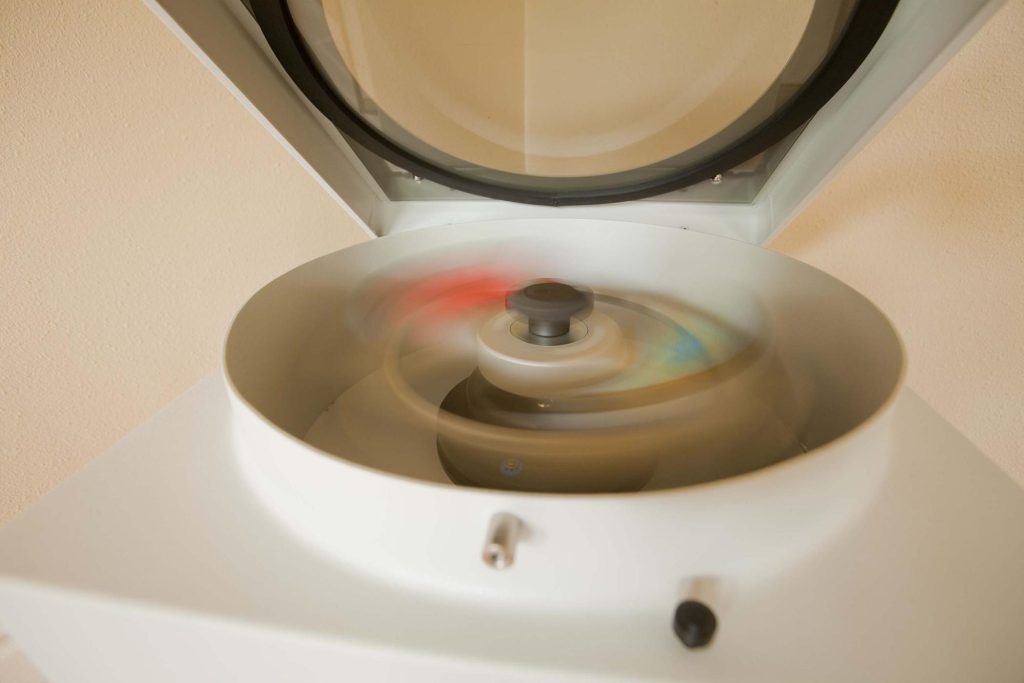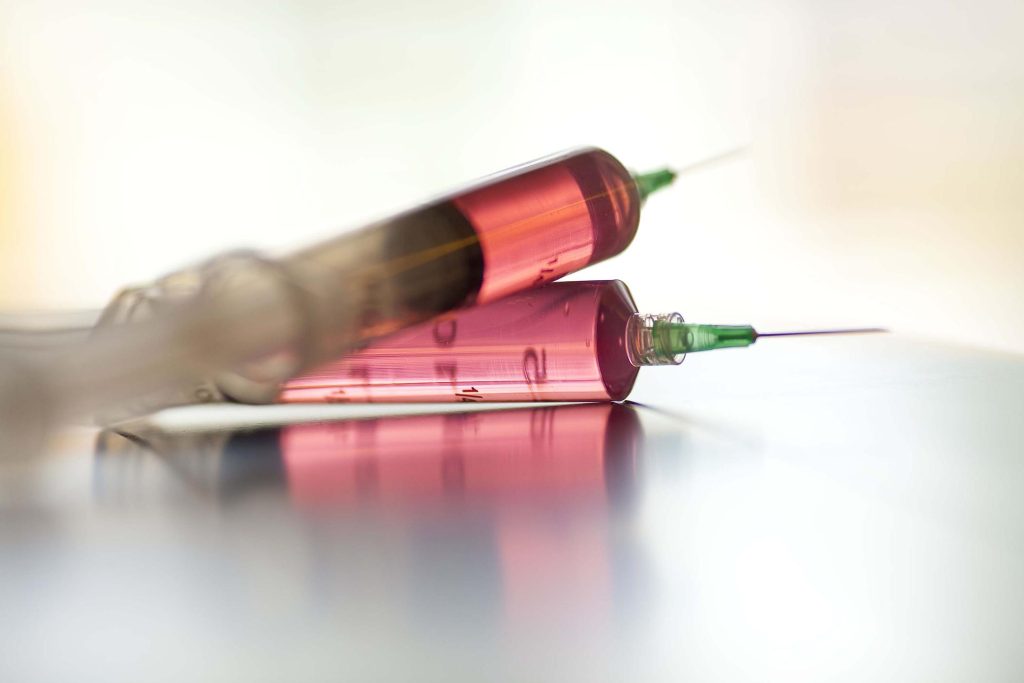
In addition to prolotherapy, autologous PRP injections are an excellent treatment option for musculoskeletal injuries. Blood is taken from the patient, processed into Platelet Rich Plasma and then reintroduced into a specific area of injury to accelerate the healing process. Increasing the concentration of platelets in an injured site serves as a catalyst for rapid wound healing and tissue remodeling. Platelets contain a multitude of growth factors and other adhesion molecules that help stimulate the healing process.
Musculoskeletal injuries of all types can be treated with PRP. We have seen excellent results in the following conditions: tendonopathy, tendonosis, acute and chronic muscle strain, muscle fibrosis, ligamentous sprains, joint capsule laxity, arthritis, arthrofibrosis, articular cartilage defects, meniscal injury, labral tears, and chronic synovitis or joint inflammation.
At Sellwood Family Medicine, Dr. Patrick uses Harvest Technologies Smart Prep2 system for platelet concentration. This is the only FDA approved system. This system safely and reliably concentrates platelets and growth factors 4-6 times above baseline.
We have seen excellent results with PRP for injuries that have failed conservative or surgical therapies. The average number of injections is two or three at four-six week intervals.
For further information on PRP you may download this PDF (Practical Pain Management article by David Krane, MD and Peter Everts, PhD)

Prolotherapy
Prolotherapy, also known as regenerative injection therapy, is an excellent treatment option for musculoskeletal (MSK) disorders and dysfunction of all types. Prolotherapy is the process of injecting a solution of dextrose, procaine, and Vitamin B12 into injured tissues. Common areas of treatment include tendons, ligaments, muscle fascia and joint capsules. The purpose of these injections is to strengthen injured areas by producing new, healthy connective tissue. In fact, prolotherapy is the only non-surgical treatment proven to rebuild and strengthen connective tissue. This tissue regneration (or cell proliferation) is mediated by various growth factors.
Used with permission from Ross Hauser, MD. Prolo Your Pain Away! 2007. Caring Medical Regenerative Medicine Clinics.
Most chronic joint pain is due to a weakness in ligaments and tendons that surround the joint. Prolotherapy corrects this underlying weakness. It takes, on average, three to six treatments to effectively cure most chronic pain. In the more advanced cases, treatment with PRP (platelet rich plasma) may be needed for optimal results. We have seen great results in the following conditions:
- ligament and tendon weakness resulting in joint instability or pain
- chronic MSK disorders unresponsive to more conservative treatment
- sports injuries
- Motor vehicle accidents
- falls
- repetitive vigorous spinal manipulation
- osteoarthritis
References
Rabago D, et al: Prolotherapy in primary care practice. Prim Care. 2010 Mar;37(1):65-80. http://www.ncbi.nlm.nih.gov/pubmed/20188998
Topol GA, Reeves KD: Regenerative injection of elite athletes with career-altering chronic groin pain who fail conservative treatment: a consecutive case series. Am J Phys Med Rehabil. 2008 Nov;87(11):890-902. http://www.ncbi.nlm.nih.gov/pubmed/18688199
Miller MR, Mathews RS, Reeves KD: Treatment of painful advanced internal lumbar disc derangement with intradiscal injection of hypertonic dextrose. Pain Physician. 2006 Apr;9(2):115-21. http://www.ncbi.nlm.nih.gov/pubmed/16703971
Hakala RV: Prolotherapy (proliferation therapy) in the treatment of TMJ. Cranio. 2005 Oct;23(4):283-8. http://www.ncbi.nlm.nih.gov/pubmed/16353469
Topol GA, Reeves KD, Hassanein KM: Efficacy of dextrose prolotherapy in elite male kicking-sport athletes with chronic groin pain. Arch Phys Med Rehabil. 2005 Apr;86(4):697-702. http://www.ncbi.nlm.nih.gov/pubmed/15827920
Linetsky FS, Miguel R, Torres F: Treatment of cervicothoracic pain and cervicogenic headaches with regenerative injection therapy. Curr Pain Headache Rep. 2004 Feb;8(1):41-8. http://www.ncbi.nlm.nih.gov/pubmed/14731382
Reeves KD, Hassanein KM: Long-term effects of dextrose prolotherapy for anterior cruciate ligament laxity. Altern Ther Health Med 2003 May-Jun;9(3):58-62. http://www.ncbi.nlm.nih.gov/pubmed/12776476
Klein RG, et al: Biochemical injection treatment for discogenic low back pain: a pilot study. Spine J. 2003 May-Jun;3(3):220-6. http://www.ncbi.nlm.nih.gov/pubmed/14589203
Reeves KD, Hassanein KM: Randomized, prospective, placebo-controlled double-blind study of dextrose prolotherapy for osteoarthritic thumb and finger (DIP, PIP, and trapeziometacarpal) joints: evidence of clinical efficacy. J Altern Complement Med. 2000 Aug;6(4):311-20. http://www.ncbi.nlm.nih.gov/pubmed/10976977
Reeves KD, Hassanein KM: Randomized prospective double-blind placebo-controlled study of dextrose prolotherapy for knee osteoarthritis with or without ACL laxity. Altern Ther Health Med 2000 Mar;6(2):68-74, 77-80. http://www.ncbi.nlm.nih.gov/pubmed/10710805
Ongley MJ, et al: A new approach to treatment of chronic low back pain. Lancet 2:143-146, 1987. http://www.ncbi.nlm.nih.gov/pubmed/2439856
